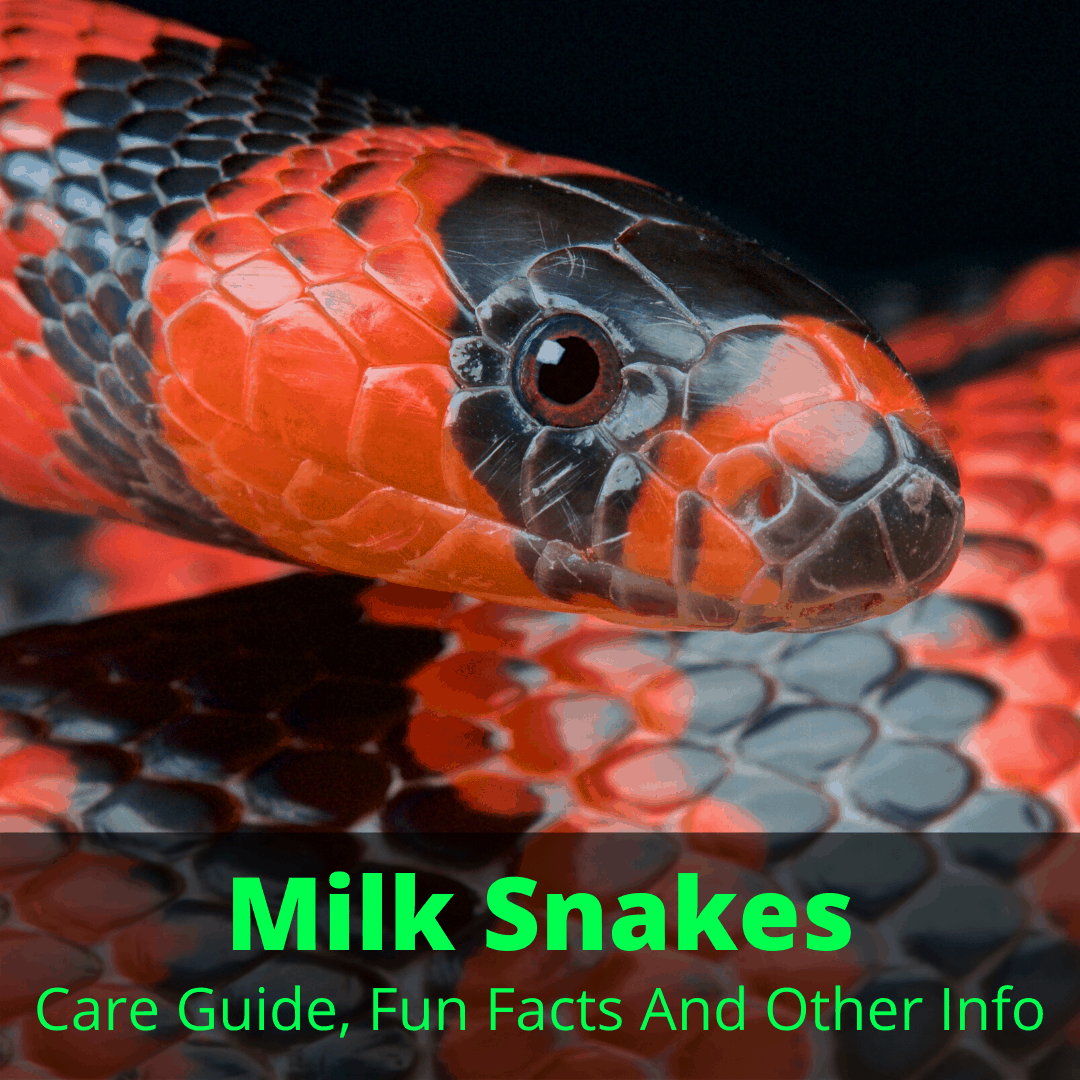
Why milk snakes?
In the past, farmers often found these snakes in their barns. They thought the snakes wrapped themselves around the cows legs during the night and drank their milk.
Don’t ask me why they jumped to that conclusion.
Whatever their reason, the name milk snake stuck.
Let’s find out more about this snake with the unusual name.
We’ll give you all the basic info, some more interesting facts and a care guide, in case you’re thinking of keeping a milk snake as a pet.
Table of Contents
Milk Snakes
Those farmers used to despise these snakes, but for no good reason. Just in case it is not obvious – milk snakes do not drink milk. They also do not harm cows or other farm animals in any way.
Milk snakes are beautiful and come in a variety of colors. They range from the red and black ones, to the albino snakes which are white and red.
You’ll also see some brown ones with dark brown blotches that look very different from the regular red and black ones.
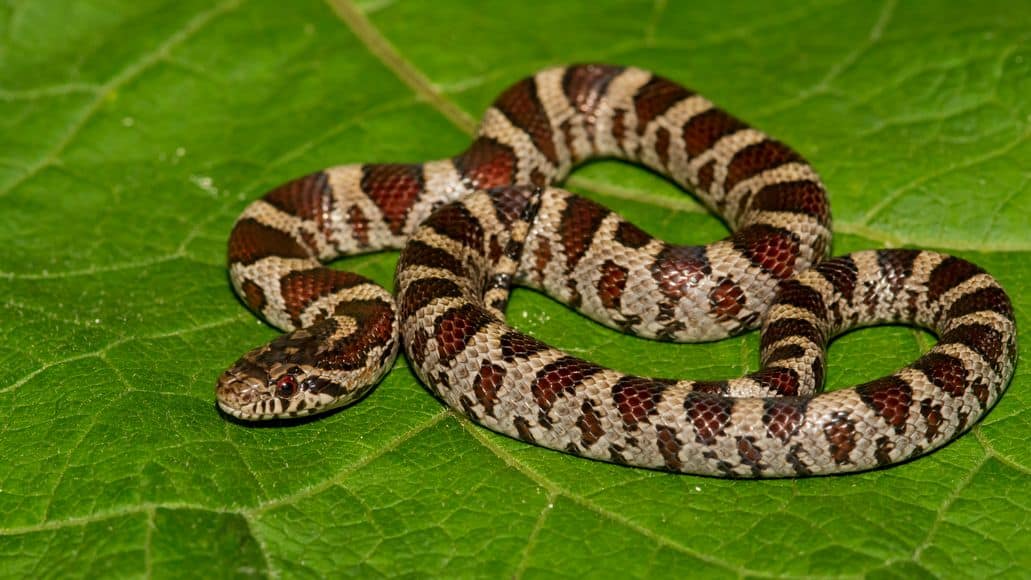
Despite those farmers’ feelings about milk snakes, they actually make for a great pet. Caring for them is not overly difficult.
Milk Snake Care
The most important factor in caring for milk snakes is getting the enclosure set up properly.
Enclosure Setup
For the enclosure, you want at least a 20-gallon tank, though bigger is always better. This terrarium works well, but if you have the space for something a bit bigger, do it:
Our article on buying a terrarium will help you find the right one.
Fill the bottom of the enclosure with at least 2 inches of aspen shavings.
Those are the best type of substrate for this snake. Our substrate buying guide explains why aspen is the best choice.
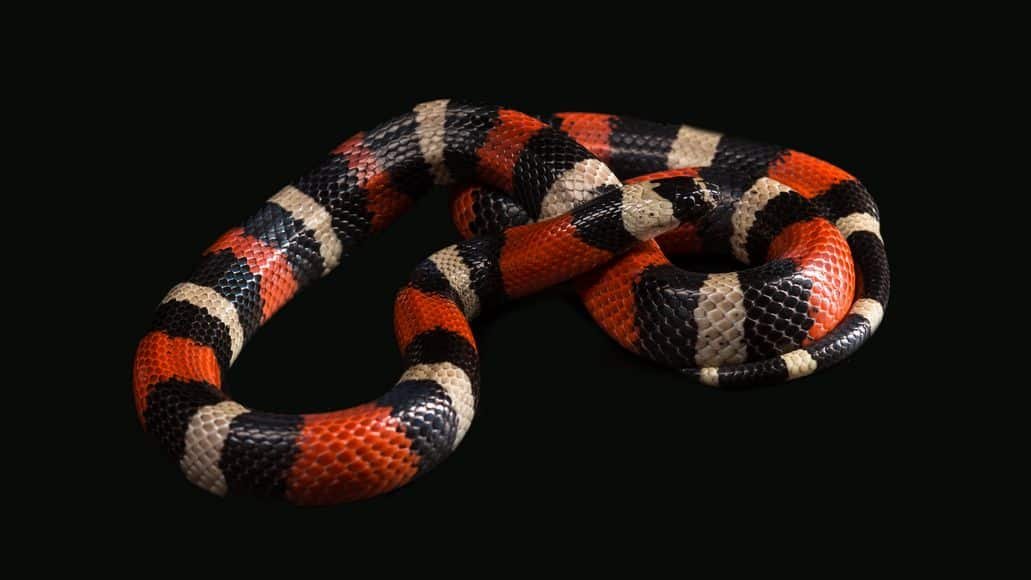
Add some nice decorations for the snake to climb on and hide behind. Get it some climbing vines and branches and at least two hides. Put one hide on the hot side and one on the cool side of the enclosure. Not sure what that means? Read the next section.
Temperature
The enclosure needs to be divided into two sections: the warm section and the cool section. The warmer section should be about 80° F and the cooler end should be at room temperature (around 70° F).
You should add two snake hides like the ones here, with one on each end of the enclosure. That way your pet has a place to conceal itself and feel secure, whether it needs to raise its body temperature on the hotter side or cool down on the colder one.
Use either a heating bulb or a heating pad to raise the temperature. Attach it to a thermostat, so that you can be sure it never gets too hot or too cold. These are the best thermostats for snakes.
You should put a water dish for your snake on the cool side. Get one that is large enough for the snake to get into, like this one:
One the warm side of the cage, you should also add a humidity box.
Humidity Box
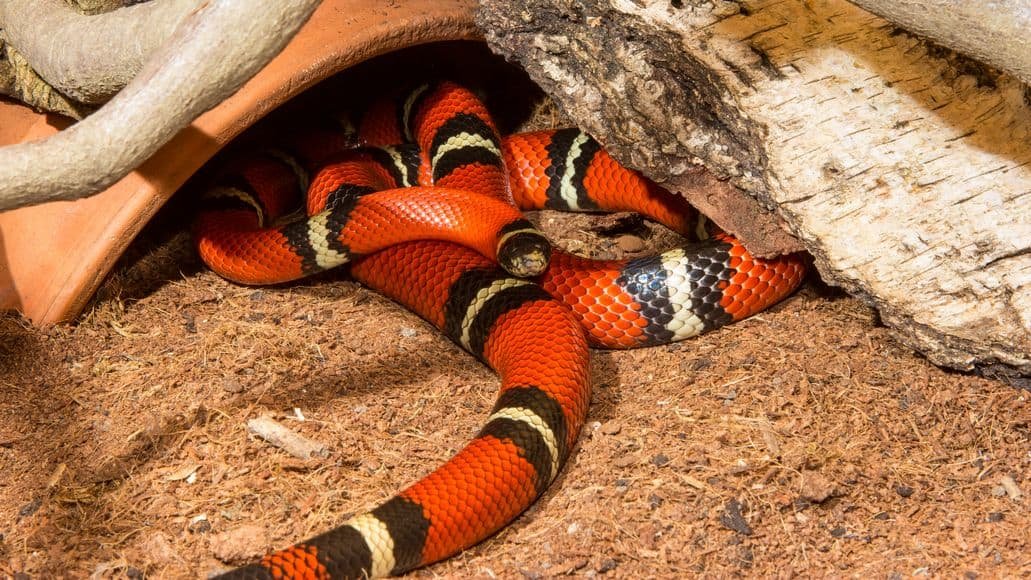
It is very important that you have a humidity box inside of the enclosure. You do not need any fancy gadgets or humidity sensors. Most of them do not work anyway.
You can easily make your own humidity box using any Tupperware container like these:
You can also buy a pre-made humidity box like this one:
If you make your own, fill it up halfway with damp moss. This type of moss works well:
Make sure it is only damp, and not soaking wet. You do not want to see water in the bottom of the box, after you have filled it with moss.
Cut a hole in the top of the Tupperware, so that the snake can get in and out. You could put the hole in the side, but then the snake ends up pulling all the moss out with it, when it exits the box.
If you use a pre-made humidity box, the hole will be in the side, but you don’t need moss with those (though you can still use it to increase humidity even more.
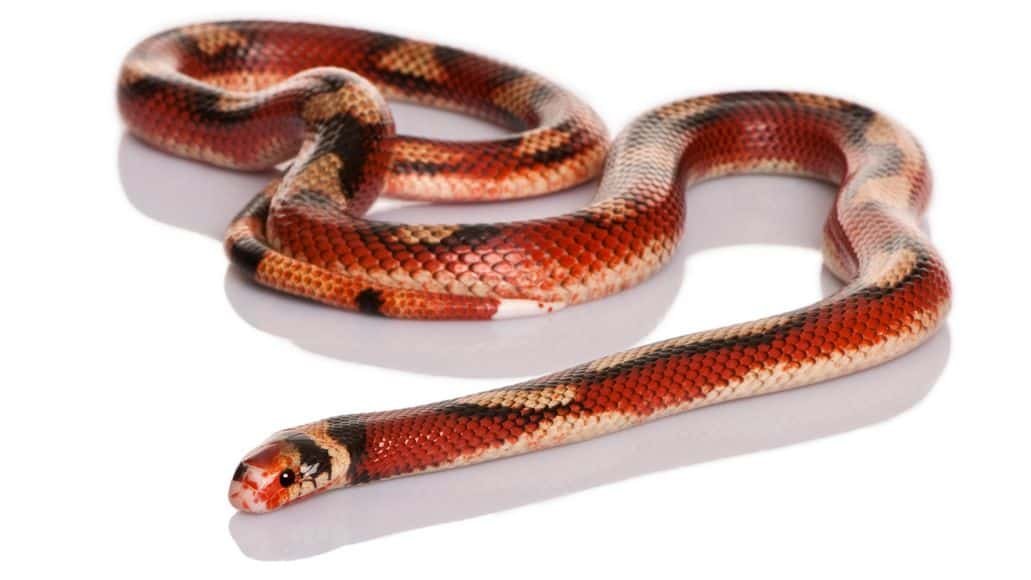
Your snake will mostly use this box to shed its skin. The high humidity ensures a perfect shed. That is why it is important to locate this box on the warm end of the enclosure.
The snake may not know what to do with the box at first, but once it learns, it may never want to leave. They love the feeling of the damp moss on the skin. But it is actually not a good thing to leave this box in the snake enclosure for more than a few days.
You generally only want to put the box inside the terrarium when it is time for your snake to shed. Otherwise, the constant high humidity can cause damage to its skin.
How Do you Know When Your Snake Is About To Shed?
Before snakes get ready to shed, their eyes turn blue or cloudy. This is due to an oil they excrete between the two skins so that the old skin can slide off.
When you notice the change in the eyes, that is a good time to put the humidity box in the terrarium. That way the snake can spend time in there before shedding to ensure its skin ids properly hydrates and comes off smoothly, in one piece.
Milk Snake Facts
Here are six interesting facts about milk snakes that you probably did not know. We hope you find them interesting.
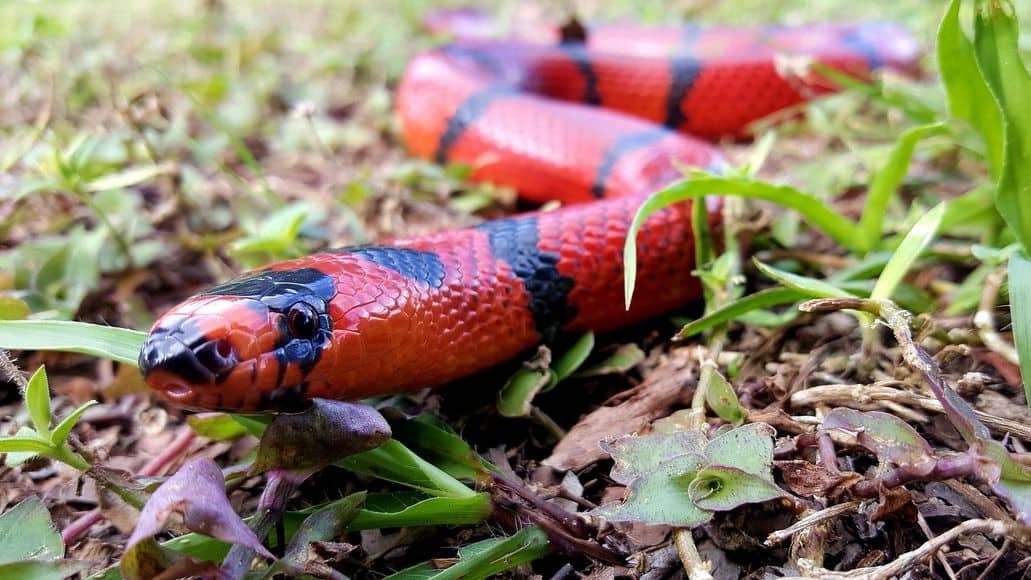
Cannibalistic Tendency
The milk snake is park of the king snake family. As such, they are snakes that eat other snakes. It is not be wise to keep more than one in an enclosure.
Voracious Appetite
Milksnakes love to eat, so be careful when you are feeding them. This is not because they are mean, but rather because they think everything is food when they are eating. Be careful when picking them up after a meal, too. It is a good way to get bitten.
They Are Copycats
This snake tries its best to mimic the coral snake, which is highly venomous. This is the milk snake’s way of scaring away predators. Unfortunately, like all the other coral snake look-alikes, it also gets a lot of them killed by scared humans.
If you live in an area that has both milk snakes and coral snakes, you will want to know how to tell them apart. Learn more in our article comparing the coral snake vs king snake vs milk snake here.
Small Snakes
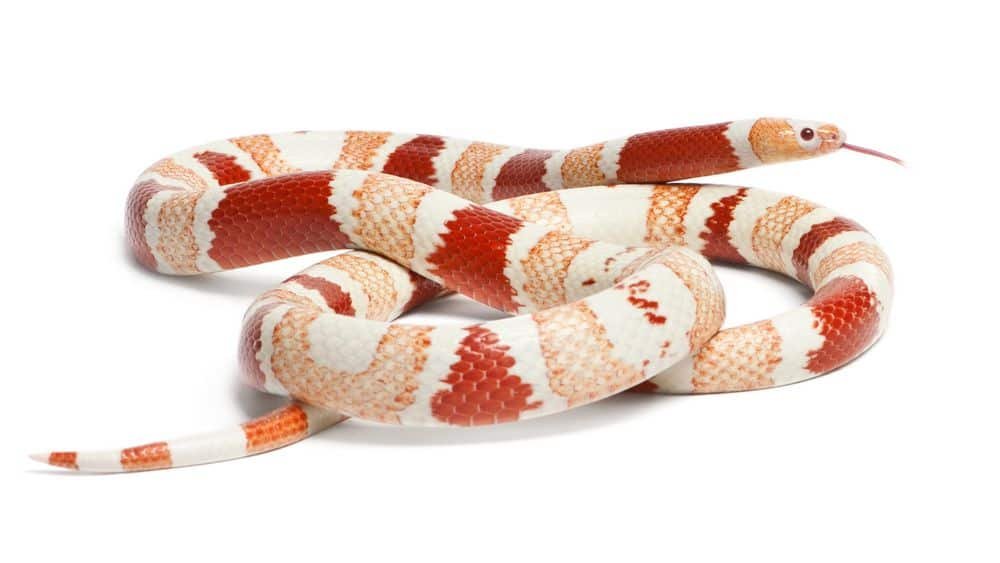
Adult milk snakes rarely grow longer than four feet. That is one of the reasons they make such good pets. They do not require much space.
Small Number Of Offspring
Milk snake are an egg-laying species (not all snakes are). Females can lay 6 to 8 eggs during each breeding period. That is far fewer offspring than many other species.
Harmless Snakes
Milk snakes can bite if you pick them up just after they have been fed, but on the whole, they are harmless and do not want to bite you. Are milk snakes poisonous?
No, they are not. They are also non-venomous. Even if they bite, it will not cause any damage. Just make sure to clean the area and keep an eye out for signs of infection.
If you have a milk snake hanging out in your yard, they will actually help you, because you will not have any rodents bothering you.
Different Types Of Milk Snakes
There are many subspecies of milk snake. Here are some of the more common ones.
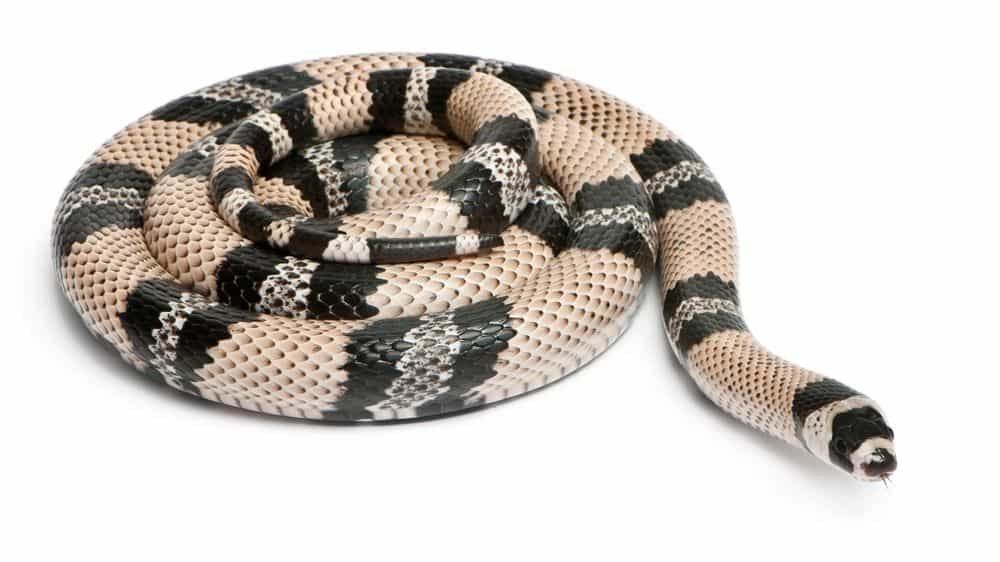
Pueblan Milk Snake
Pueblan milk snakes are one of the more popular species of milk Snakes, because they are super hardy and do very well in captivity. They grow to about 30 to 40 inches long, which makes them one of the smaller species. They love eating pinky mice and have no issue at all eating.
Sinaloan Milk Snake
The Sinaloan subspecies is also a very commonly kept milk snake. They are much redder than the others. Their red, black and white pattern is know as a triad.
These guys are from Central America and get a little larger than the others, maxing out at about 4 to 5 feet. They are also much more squirmy than the other breeds, making them not as easy to handle.
Nelson’s Milk Snake
The Nelson’s milk snake comes in a lot of different colors. It is home to numerous areas of Mexico. It grows to an average size of around 42 inches.
Mexican Milk Snake
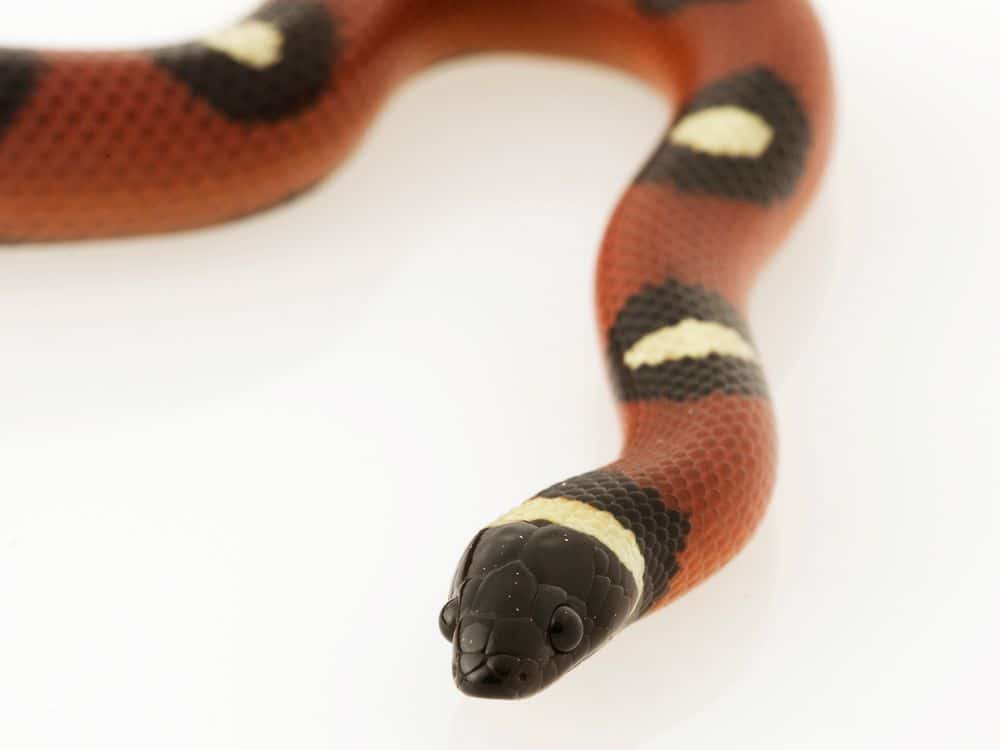
The Mexican milk snake comes from? You guessed it – Mexico!
These snakes grow to a maximum of 24 inches. They are also super hardy and make for a great pet. When breeding they can lay up to 10 eggs at a time. They are easy to feed and you can even give them a frozen pinky mouse right off the bat.
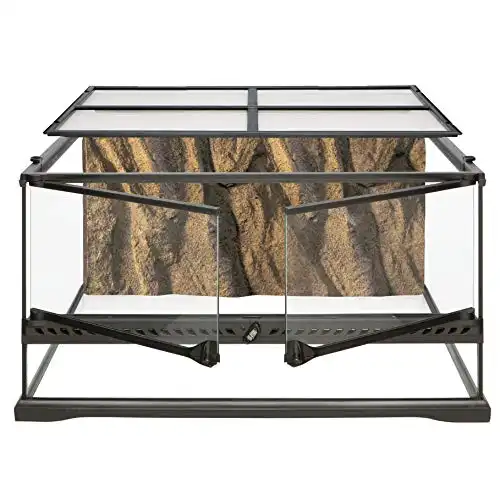
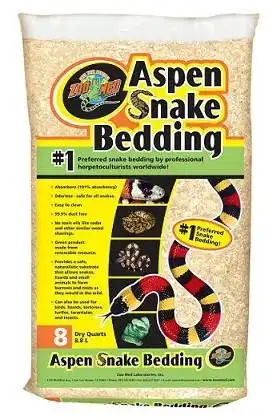
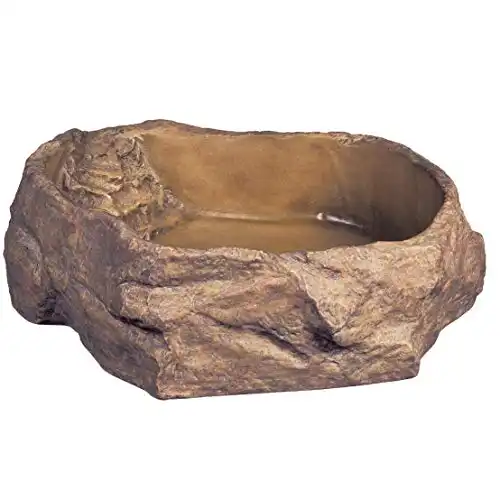
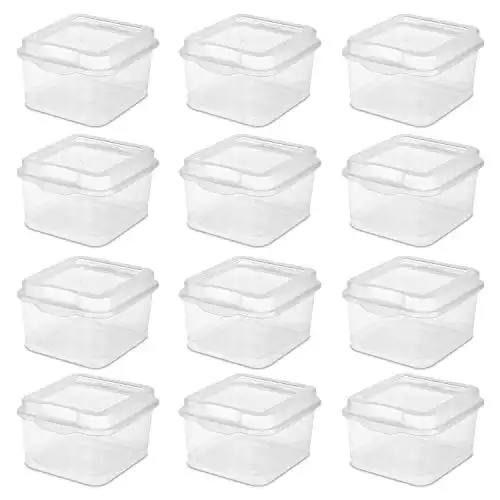
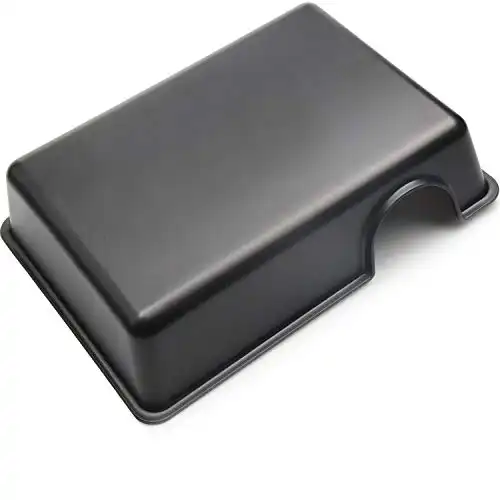
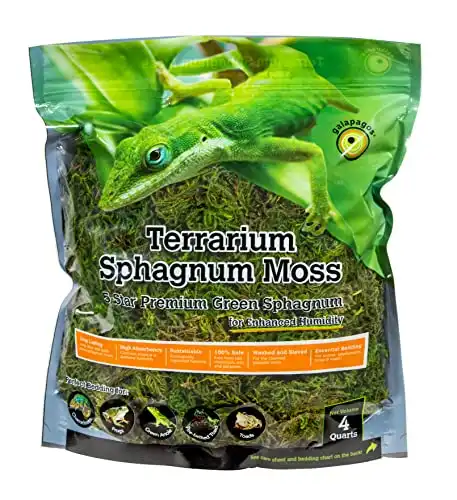

Is the corn snake or the milk snake more valuable to a child?
What do you mean by “more valuable”? If you’re trying to decide between the two, I’d go with the corn snake. There’s a lot more info available online, so you’ll always have more resources to help you out.
That said, both make great pets and both are relatively easy to care for.
I mean what snake can a child control?